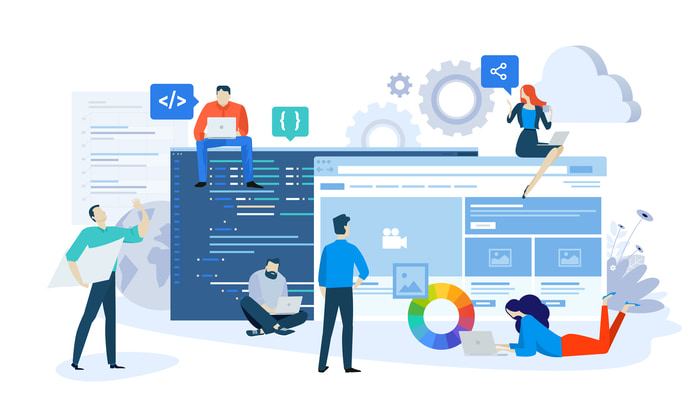Micro, video led learning has been one of the biggest trends within elearning for quite some time, but with the ever increasing popularity of streaming platforms like Netflix and micro-content delivery apps such as TikTok and Instagram Reels, it is no surprise that organisations are eager to replicate the ‘Netflix approach’ within learning and development.
They’re fun, fast and addictive (even if you do follow mostly cat-related content like me). But under the shiny seductive appeal of this approach lies a problem.
I’m getting ahead of myself. First time for a quick quiz, pencils and pads at the ready…
What is the biggest challenge facing Learning and Development professionals today?
- Dealing with the fallout from COVID-19.
- Achieving goals with reduced L&D budgets.
- Building a digital learning culture.
Well, according to the Learning and Performance Institute, it’s c that sits firmly in the top spot.
However, in a sense it encapsulates many of the other top challenges; remote or semi-remote teams, a need to support the workforce of the future and embedding learning into the flow of work. Fostering a successful digital learning culture holds the key, and the response to this has been micro-learning, content catalogues and video coming to the fore. But are these trends enough to create the culture of continuous learning that is vital for organisations to remain relevant and agile?
A poisoned chalice?
Part of creating a learning culture is to draw on what employees see already in their day to day lives – to make learning seamless and integral. If we enjoy it out of work (or so the logic goes) we’ll enjoy it in work. If you’re one of the many who use Netflix, you’ll be familiar with their intuitive interface and broad offerings. With 204 million users, it creates an irresistible template for Learning Management Systems. A well-curated platform that could give each learner near infinite choice of learning resources, with easy, attractive UI and micro-learning video based content that fits in around the employee’s workday.

But before shouting “Praise the L&D lord, my struggles are over” and reaching for the celebratory champagne, let me reveal a less enticing fact. The average Netflix viewer only gets through 2% of the content on offer in a year. Which may not be an issue when your offering includes seven hour epics on Norwegian salmon fishing, but it may present more of a problem when despite a broad range of digital learning, your employees fail to engage with even 10% of it. Throw in decision fatigue and we start to realise that utilising the Netflix approach, with a glut of learning resources, does not automatically build the learning culture you’re looking for. In this case, more can actually mean less. Less engagement, less impact, and less, or rather lower, return on your investment.
Culture (not just content) is king
So it’s clear that building a digital learning culture won’t be achieved by solely boosting content availability, however attractive the Netflix approach may appear. Instead, it should be seen as one of many factors that help accelerate your learning culture and as part of the internal infrastructure that enables continuous learning. An LMS that supports your learners is a great cornerstone to your learning strategy, but what else is needed? Here are our three top tips:
-
Be the guide on the side
If learners are to engage with content, they need guidance. Some of this can already exist within an LMS, with the ability to personalise learner pathways depending on role, seniority, and development goals. Spending time on crafting these will ensure your employees explore the content that is relevant and constructive for their individual needs, instead of feeling flooded by resources.
-
Ensure offline support is as robust as online
Learning is quickly eradicated if not put into practice. Employees need on-the-job learning opportunities to cement theory. Simply put, it’s the tangible infrastructure that supports the intangible culture. Ensuring that collaborative and team learning is resourced, rewarded and encouraged ensures a sense of working toward collective goals and transference of learning not only to roles, but to the wider team as well. Communication around learning needs to be facilitated, whether through the LMS, MS Teams chats or Yammer groups. Being able to discuss and share forays into learning, including both mistakes and successes, will generate the continued interest in self-development. Just like word-of-mouth reviews, the recommendations and insights from peers are the most powerful.
-
Remember that change takes time
You may have heard of Kurt Lewin’s Three stage model of change. Much as we (and those around us) may expect instantaneous change, it is a process. Building a digital learning culture will not occur overnight and requires patience and perseverance to ride through the turbulence that change may bring with it. That means that every aspect of the organisation needs to not only be on board, but understand why changes are being made to ensure their buy-in. Educating others on the learning strategy helps to guarantee its success.

Equipping yourself with the right tools, like a dynamic LMS is a great first step. However, relying on this to transform your company is a gamble with the odds stacked against you. Instead, the LMS and the content housed in it, should be seen as one of many strings to your digital learning strategy bow. Terrible metaphors aside, with the right strategy in place yours can be one of the many successful organisations moving toward a successful digital culture of continuous learning.
If you’d like to find out more about building a digital learning strategy that drives productivity rather than kills it, get in touch with one of our learning consultants.





